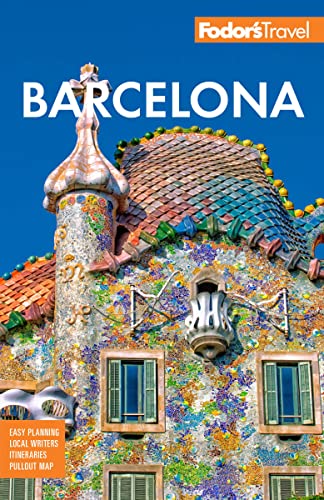Getting Oriented
Year-round, Catalonia is the most visited of Spain's autonomous communities. The Pyrenees, which separate it from France, provide some of the country's best skiing, and the rugged Costa Brava in the north and the Costa Daurada to the south are havens for sunseekers. Excellent rail, air, and highway connections link Catalonia to the beach resorts of Valencia, its neighbor to the south.
- Girona
- Figueres
- Besalú
- Olot
- Tossa de Mar
- Sant Feliu de Guixols
- S'Agaró
- Calella de Palafrugell and Around
- Begur and Around
- Cadaqués and Around
- Montserrat
- Sitges
- Santes Creus
- Santa Maria de Poblet
- Valencia
- Albufera Nature Park
- Dénia
- Calpe
- Altea
- Alicante
- Northern Catalonia. Inland and westward from the towns of Girona and Figueres is perhaps the most dramatic and beautiful part of old Catalonia; it's a land of medieval villages and hilltop monasteries, volcanic landscapes, and lush green valleys. The ancient city of Girona is an easy day trip from Barcelona. The upland towns of Besalú and Vic are Catalonia at its most authentic.
- The Costa Brava. Native son Salvador Dalí put his mark on the northeasternmost corner of Catalonia, where the Costa Brava begins, especially in the fishing village of Cadaqués and the coast of Cap de Creus. From here, south and west toward Barcelona, lie beaches, historical settlements, and picturesque towns like Sant Feliu de Guixols.
- Southern Catalonia and Around Valencia. Spain's third-largest city, rich in history and tradition, Valencia is now a cultural magnet for its modern art museum and its space-age City of Arts and Sciences complex. The Albufera Nature Park to the south is an important wetland and wildlife sanctuary. North of Valencia, the monastery of Montserrat is a popular pilgrimage; Sitges has a lovely beach, and Santes Creus and Poblet are beautiful Cistercian monasteries. Roman ruins, chief among them the Circus Maximus, are the reason to go to Tarragona.
- The Costa Blanca. Culturally and geographically diverse, the Costa Blanca's most populated coastal resorts stretch north from the provincial capital of Alicante to Dénia. Dénia, capital of the Marina Alta region and a port for ferries to the Balearic Islands, has a well-deserved reputation for gastronomy, while Alicante's historic center and vibrant night-owl scene occupy the hub of a rich agricultural area.




